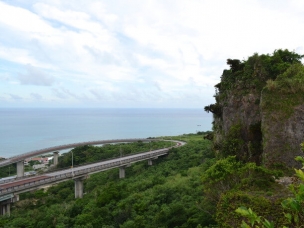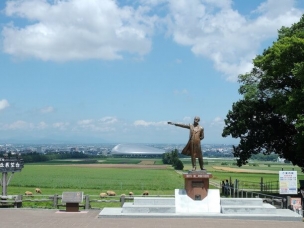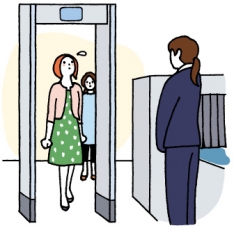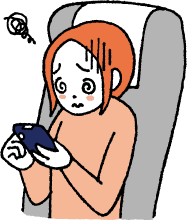Kiyomizu-dera temple is one of Kyoto’s must-see attractions!

Kiyomizu-dera temple(清水寺) is a popular tourist spot in Kyoto which . was built in Nara era(710-794). Many people visit Kiyomizu-dera temple to wish their good health, success, and romantic relationships. A great many tourists from all over the world visit Kiyomizu-dera every day.You can enjoy the ground view of Kyoto from this main stage. The valley under the main stage is a sight for autumn leaves called Kinunkyo(錦雲渓). In spring, Kiyomizu-dera is a perfect place for catching blooms of cherry blossoms as well. There is Japanese famous proverb “to jump off the stage of Kiyomizu (清水の舞台から飛び降りる)” which is equivalent to the English expression “to take the plunge”.
Special night admissions are held every year in spring, summer, and autumn. You can enjoy the illuminated Kiyomizu-dera. A beautiful blue light expresses the heart of mercy of Kannon; the Goddess of Mercy.
Kiyomizu-dera dedicated to an eleven-faced one thousand-armed Kannon, Buddhist statue shown to the public once in 33 years. Next exhibition will be held in 2033.
The beautifulness of the Nioh gate and the West gate
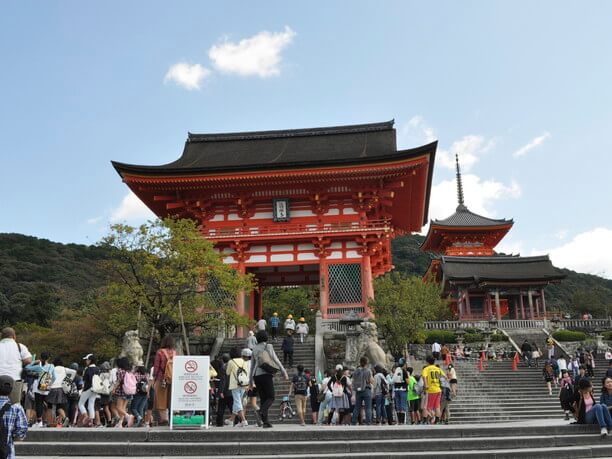
Walking through a hill from Higashioji-street(東大路通り) to Kiyomizu-dera temple, you will reach Nioh-gate(仁王門, Diva gate); the main gate of Kiyomizu-dera temple. Inside the Nioh gate, there is one of the biggest Nioh who guard the Kiyomizu-dera. From the Nioh gate, you could see the west gate(西門) and the three storied pagodas; the symbol of Higashiyama(東山) area. This stone steps in the above photo are popular photo spot in Kiyomizu-dera.
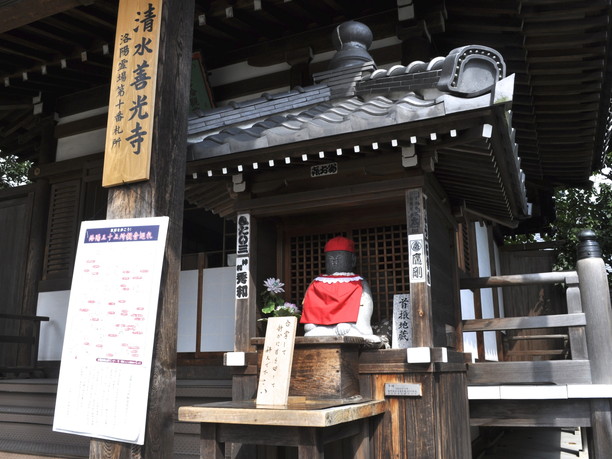
Zenkojido(善光寺堂) is located to the left side of Nioh gate. Kubifuri Jizo (首振り地蔵, Neck swinging Jizo) in Zenkojido is a rare Jizo which can move its neck. It is said that your wish will come true if you pray while you make Jizo’s neck toward n where your lover lives.
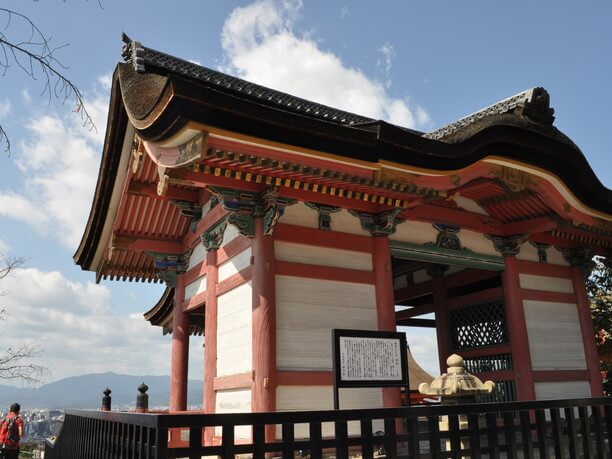
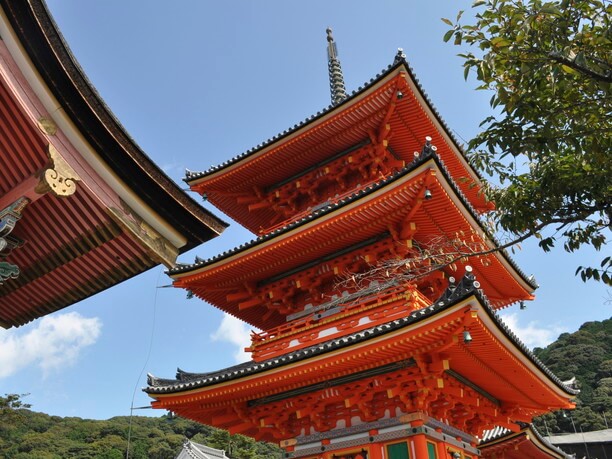
Beautiful vermillion colored west gate is the best spot to look down the sun set. You must check this best spot to see whole view of Kyoto.
Tainai-meguri in Zuigudo is very popular
Don’t forget to experience the Tainai-meguri(胎内めぐり) before going to the stage. “Tainai” in Japanese word means “a womb”, and “meguri” means “to go around”. Tainai meguri is the walking experience through the cave of Zuikudo(随求堂); prenatal of Daizuiku bosatsu(大随求菩薩); Mahapratisara.

Inside of Zuikudo It is so dark so that you cannot see anything once you go down to the cave. As you follow the rosary set on the wall, you will reach the faintly lightened Sanskrit characters graved stone. Pray while you touch and turn the stone. It will be a nice opportunity to look at your self in the dark.
Visit the main hall and stand on the main stage
The mMain hall of Kiyomizu-dera is a large wooden architecture as 36 meters (118 feet) high, 30 meters (98 feet) wide. The stage is on at the height of 13 meters (42 feet), which is as high as the fourth floor of a building.
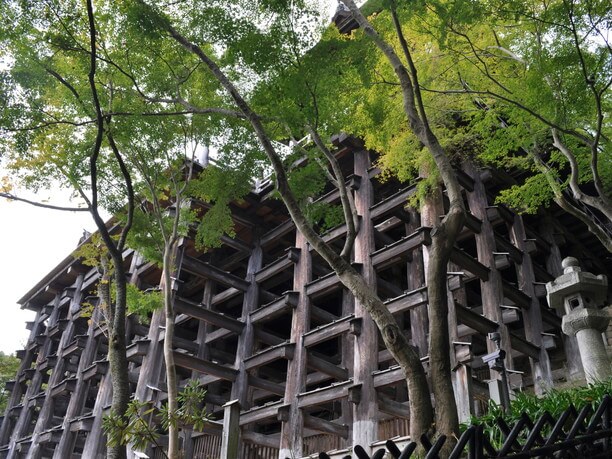
Kiyomizu-dera was built by traditional architecture style that does not use any nails or pegs called kake-zukuri style; overhang style. Setting the wood lengthwise and crosswise after lining up 18 long pillars of Keyaki over the steep cliff of Kinunkyo. Earthquake resisting is perfect as well. You could feel the wisdom of the people of the old days.
TheS stage is 190 square meters (2045 square feet) wide. It is the first-class stage stuffed with cypress board. First, let’s visit the main hall and then go on to the main stage, where Gagaku(雅楽); ancient court music and Noh(能) have been played from the Heian period(794-1185).
There are so many things to see even after you go out from the Kiyomizu -dera’s main stage
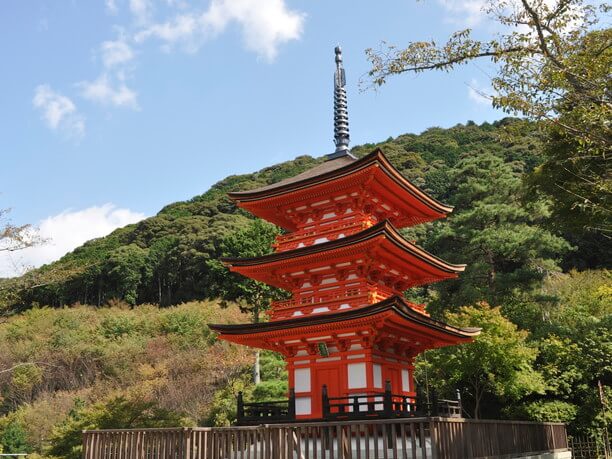
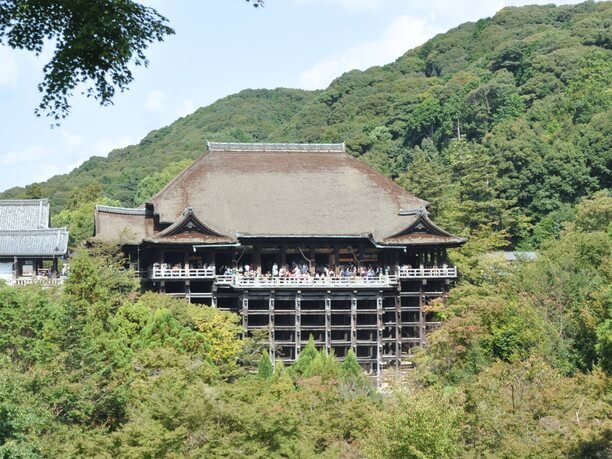
There is Koyasu-no-to(子安の塔) on the hill on the south of the main hall. Since not many people visit there, it is a good unknown spot to see the stage.

Fall of Otowa(音羽の滝) which comes from the Moutain Otowa is called golden water of Kannon(観音). It is the origin of the name Kiyomizu-dera. It’s miraculous water has a blessing on long life and wish come true.

Let’s look up at the stage of Kiyomizu-dera after watching the Fall of Otowa! You will be little scared to see if there were no rails.

You can find the thousand stone Buddha statues(千体石仏群) on the right side of Jojuin(成就院) approach. You might feel relieved when you look at the stone buddha with the moss. Citizens brought many of the stone Buddha to here during Meiji- era(1868-1912) when many of them were thrown away by the Haibutsu kishaku (historic movements of abolishing Buddhism and destroying Buddhist temples and images)
Kiyomizu-dera is a brilliant temple with great surrounds. Please take your time and explore the magnificent architecture and its seasonal charms.
- Zuigudo is a popular spot for "Tainai-meguri". Don't forget to experience it! Open from 9:00 to 16:00. Admission fee 100 yen(over elementary school student)
- Night illumination will be held in spring; cherry blossom season, summer; during Sennichi-mairi season, and autumn; colored leave season. You must see the illuminated stage. Kiyomizu-dera temple will open the gate for night exhibition after closing the gate for the usual exhibittion.
- You can relax and visit in the early morning or in the evening since there are fewer people. There is a slope for people with wheelchair and pushchair. *Okunoin(奥の院) and Todoroki-gate(轟門) are now under construction. Todoroki-gate will be completed after spring of 2016, Okunoin will be completed after autumn of 2016.
God of matching is enshrined and love stone is placed at Jishu shrine, a shrine on the side of the main hall of Kiyomizu-dera temple. Let's visit Jishu shrine if you have time. You could enjoy the charming street such as Gojo-zaka(五条坂), Sannei-zaka(産寧坂), Chawan-zaka(ちゃわん坂) on the way to and from Kiyomizu-dera temple.
- Spot name(Ja)
- 清水寺
- Address
- Kiyomizu Higashiyama-ku Kyoto-shi, Kyoto
- Address(Ja)
- 京都府京都市東山区清水1-294
- Telephone
- 075-551-1234
- Price
- Adult 400 yen, Elementary and junior high school student 200yen 6:00-18:00(Differs in season)
- Close
- Open throughout the year
- Parking lot
- No Parking
- Note
- http://www.kiyomizudera.or.jp/
- Spot name(Ja)
- 随求堂
- Address
- Kiyomizu Higashiyama-ku Kyoto-shi, Kyoto
- Address(Ja)
- 京都府京都市東山区清水1-294
- Price
- 100 yen (Over elementary school student)
- Open
- 9:00-16:00


